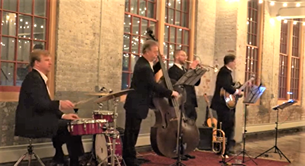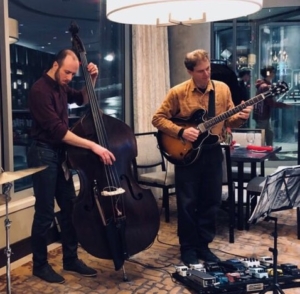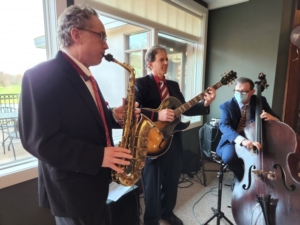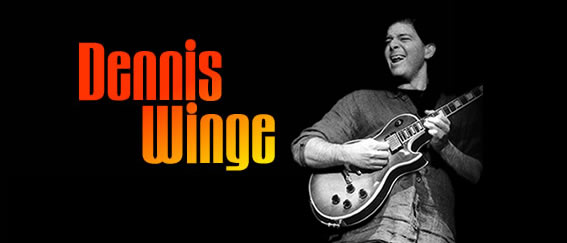Crafting the Perfect Setlist for a Great Jazz Experience
The order of songs in a performance has a power that is often underestimated by some bands and musicians. Every song should be strong enough to stand on its own but is also shaped, to a small but psychologically impactful degree, by the songs that come before and after it. Percussionist Bobby Sanabria says, “I want my sets to be like a good play and have a logical progression.” Similarly, jazz guitarist Jim Hall notes in Exploring Jazz Guitar, “The first sounds an audience hears can affect what happens for quite a way into the performance, perhaps the whole way.”
A well-constructed setlist does more than just sequence songs; it curates an emotional and musical journey for the audience. Whether you’re preparing for a gig, open mic, showcase, or jazz performance, a strong setlist enhances engagement, ensures a well-balanced show, and allows room for both structure and spontaneity. This guide synthesizes practical tips and personal insights into crafting an unforgettable setlist.

Understanding the Audience and Occasion
The first step in building the perfect setlist is understanding the audience and the event’s context. Is it a sophisticated corporate gala, a lively celebration, or an intimate gathering? Tailoring the setlist to match the occasion ensures that the music resonates with the atmosphere and expectations of the attendees. For example:
- A wedding reception may require a romantic and uplifting vibe, ending with a high-energy dance number.
- A corporate dinner might call for subtle, elegant background music to set a sophisticated tone.
- A jazz club performance may demand a mix of classic standards, ballads, and high-energy improvisational pieces.
Defining the emotional impact you want to leave is crucial. Do you want the audience to feel excited, uplifted, introspective, or expanded? Discussing and deciding on this as a band or solo performer helps shape the entire performance.
Another important factor is the length of the performance. What is your average song length, and how much total time do you have? Divide the latter by the former, and the result is the number of songs you can conceivably play within the allotted time. Going over time, especially in settings with other bands or scheduled events, is unprofessional. Planning ahead prevents the need to rush or cut songs unexpectedly.
The Importance of the First Song
The first song is crucial as it immediately begins to shape the entire mood of the performance. A well-chosen opening tune sets the tone, establishes audience expectations, and provides a strong first impression. For most events, an easy, medium-tempo piece works well, allowing musicians to settle into the environment and ensuring good sound balance. Practical considerations include:
- Which songs are easiest to play and always sound good?
- Does the venue have unique acoustic characteristics that take time to adjust to?
- What energy level will best engage the audience right away?
For jazz performances, I often begin with a tune that is engaging but not overly complex, like a medium-tempo swing or bossa nova. This helps both the band and the audience ease into the experience.
Variety and Flow
Apart from choosing the first and last song carefully, the key to creating a compelling setlist is balance and variety across multiple dimensions:
- Tempo – Ensure each new song is at least somewhat faster or slower than the previous one.
- Key Changes – Shifting between different keys prevents monotony and keeps the set musically engaging.

- Major vs. Minor – Positioning ‘brighter’ songs against moodier ones creates emotional contrast.
- Groove and Feel – Alternate between straight feels and triplet-based feels (swing, shuffle, Latin rhythms).
- Time Signatures – If you have songs that are not in 4/4, placing them strategically maximizes impact.
- Familiar vs. New Material – Playing familiar songs first or last can provide grounding, while new or challenging material fits best in the middle.
- Short vs. Long Pieces – Positioning shorter songs against more epic pieces ensures a balanced experience.
- Melody, Harmony, and Rhythm – Some songs emphasize melody, others harmony or rhythm. Placing them thoughtfully enhances engagement.
For jazz performances, I like to introduce variety early on. A common structure I use is:
- Medium Swing or Latin Tune – A comfortable opener to set the tone.
- Bossa Nova or Mambo – Adding a Latin groove for contrast.
- Waltz or Ballad – Offering a softer, more introspective moment.
- Funk or Straight-8th Tune – Bringing in groove and modern energy.
- Uptempo Swing – Injecting excitement and drive.
- Blues or Classic Standard – Ending with something familiar and high-energy.
Avoiding a “medium swing rut” is key. I’ve seen amateurs get stuck in this pattern, unaware that it’s making their set feel monotonous.
Balancing Familiarity and Creativity
A well-rounded setlist strikes a balance between familiar tunes and unexpected choices. Classic jazz standards are the bedrock of any jazz ensemble’s repertoire, as they evoke nostalgia and provide a common ground for the audience. Here is a version of “La Vie En Rose” that we played by request from the bride and groom at the wedding we played last New Years’ Eve. Interspersing them with lesser-known gems and fresh interpretations keeps the musical experience exciting and dynamic.
The Role of Audience Engagement
Engaging with the audience is a vital component of any performance. This interaction can take many forms, from introducing songs and sharing anecdotes to inviting audience participation. For example, I might introduce a song with a story about its significance to me or the guests, or even ask the guests for requests. This not only personalizes the experience but also creates a deeper connection between the musicians and the audience.
Showcasing Individual Talents
Each member of a jazz ensemble brings unique skills and strengths. It’s essential to highlight these talents throughout the set. Whether it’s a saxophonist’s soulful solo or a pianist’s intricate improvisation, these moments showcase the musicians’ abilities and add depth to the performance. This is especially important in jazz, where improvisation and personal expression are key elements of the genre.
In my experience, balancing these solo moments with ensemble playing is crucial. Too many solos can disrupt the flow, while too few can leave the audience wanting more. Finding the right balance keeps the performance dynamic and engaging.
Let the Last Song Be Light-Hearted
The last song is perhaps the most important. It leaves a lasting impression, and whether you’re playing one set or multiple, it should feel like a satisfying conclusion.
- If performing multiple sets, the last song of the first set should be lighthearted and engaging, encouraging people to stick around.
- The final song of the night should be memorable and impactful, something the audience will hum on the way home.
- Al Jarreau once said, “The last song should be a cleansing of the palette – like sherbet before the next delicious piece of music.” I take this to heart when selecting a final piece.
For jazz performances, this might mean ending with an uptempo blues, an exciting bebop tune, or a song that invites audience participation.
Flexibility and Spontaneity
While having a planned setlist is important, leaving room for spontaneity is equally crucial. Jazz, by its very nature, thrives on improvisation and the unexpected. This flexibility allows the band to respond to the audience’s energy and mood, creating a unique and authentic experience. For instance, if the audience seems particularly enthusiastic, I might extend a lively tune with additional solos or even add an unplanned piece to the set.
very nature, thrives on improvisation and the unexpected. This flexibility allows the band to respond to the audience’s energy and mood, creating a unique and authentic experience. For instance, if the audience seems particularly enthusiastic, I might extend a lively tune with additional solos or even add an unplanned piece to the set.
Other Elements to Consider
Talking Breaks
Strategic pauses between songs allow for engagement. Introducing songs with anecdotes or inviting audience participation personalizes the experience.
Instrumentation Changes
If members switch instruments, position these moments for maximum effect.
Breakdown Sections
Including songs performed with fewer instruments can add a dramatic arc to the set.
Spontaneity and Flexibility
As a musician, the process of creating and performing a setlist is deeply personal. It reflects not only my musical preferences and skills but also my understanding of the audience and the event. There are moments of doubt and challenge, especially when experimenting with less familiar genres or original compositions. However, these challenges are also opportunities for growth and learning.
If the gig is going well overall, then we might be inclined to take more chances. For example, I might call a tune in an odd meter or with a specific variation on the form. For example, here is an example of my trio playing “Lover Man,” with a vamp-and-release form, which I had explained to the rhythm section only moments before we played it. Other more risky examples could be tunes at extreme tempos, a rock or pop tune that the band might not know as well but could probably pick up quickly.
The Art of Setlist Crafting
Crafting a perfect setlist is an art that requires a deep understanding of music, the audience, and the event. It’s about creating a journey that entertains, engages, and leaves a lasting impression. Through thoughtful planning, a variety of musical styles, audience interaction, and a touch of spontaneity, a well-crafted setlist can transform a performance into an unforgettable experience.
As I reflect on my journey and the many performances I’ve been fortunate to be a part of, I am reminded of the joy and responsibility of being a musician. Each performance is an opportunity to connect with others, to share the beauty of music, and to grow as an artist. It’s a journey filled with challenges and triumphs, and one that I am grateful to be on.
—
If you’re planning an event and looking for live music in the Myrtle Beach SC area, I invite you to book a free music consultation with me or reach out through the contact page. Let’s create an unforgettable musical experience together.



